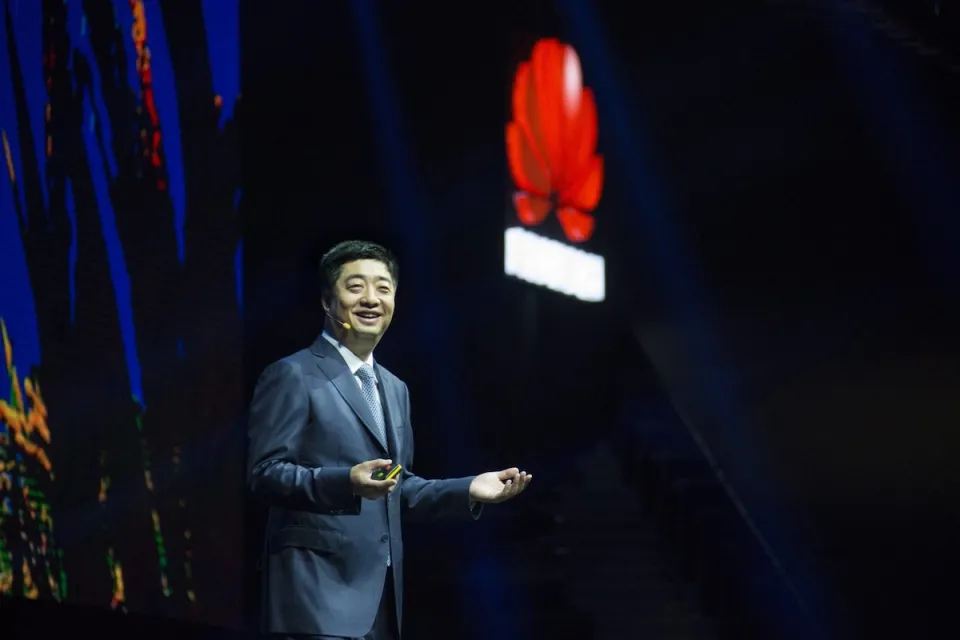Huawei: Let a thousand clouds blossom

Two years ago Huawei, a Chinese maker of telecommunications systems, said it wanted to be the world’s leading information technology company.
This year, at the three-day Huawei Connect event held in a giant arena on the banks of Shanghai’s Huangpu River, the company outlined its plan for getting there.
In a keynote speech, Ken Hu, one of Huawei’s three rotating CEOs, said the company aims to position itself as the enabler and driver of an intelligent world.
Over the next three days the meaning of these words became clear: Huawei will sell the hardware and software other companies need to build their own clouds.
Ambitious
Becoming the world's leading IT company was, and remains, an ambitious goal. It means taking on the likes of HP, Cisco and IBM. These US technology giants are long-established, well-known global brands. They have long-standing customers and deep relationships. It also means taking on AWS and Microsoft in cloud computing.
Every technology company likes to talk about disruption as if they invented the term. For some of the dinosaurs it is just an idea they pay lip-service to. At Huawei, disruption is a way of life.
Over the last decade and a half Huawei pulled off an audacious, disruptive take-over of the telecommunications equipment sector.
A decade earlier that industry was dominated by its own set of secure, long-established western giants. Now many of those names have disappeared.
Phone disruption
More recently Huawei disrupted the mobile phone market. Its first handsets were low-cost models. Huawei sold them to telecommunications carriers who in turn sold the phones to customers using their own brands. Huawei realised these devices were good enough to sell in their own right.
Today Huawei is the third biggest phone maker behind Samsung and Apple.
Now it’s the turn of the information technology incumbents to face disruptive Huawei.
These are already difficult times for traditional information technology companies. For years they sold high margin products and services to a world hungry for computers and software. Those high margins were under pressure for a generation, but that was nothing compared to the threat from cloud computing.
Infrastructure-as-a-service
Many organisations have stopped or slowed down their IT capital expenditure purchases. Instead they spend operational expenditure money buying infrastructure-as-a-service cloud services from companies like Amazon, Microsoft and Google.
Where they once installed expensive and complex applications, they now buy software-as-a-service from the likes of Salesforce, Netsuite and SAP ByDesign.
This shift in spending, from traditional IT equipment to cloud services is the key to Huawei’s ambition.
Extend the brand
In some ways it is a classic brand extension exercise. Huawei’s most important customers have always been the telecommunications carriers. Huawei sells them wireless and fixed line network equipment. In New Zealand it does business with Spark, Vodafone, 2degrees and Chorus.
Now many of these companies are embracing cloud computing. Spark New Zealand has made huge cloud investments. It is one of the largest local cloud service providers. Many other telecommunication service providers in countries like China and Germany are starting their own cloud offerings.
Huawei already has the relationships in place with these telecommunications firms. It also has a track record of delivering. So it makes perfect sense for telecommunications companies to buy the hardware they need to operate cloud services from the same company that sells them network equipment.
And that’s the key to Huawei’s strategy. Another of the company’s three rotating CEOs, Eric Xu, says the company isn’t going after Amazon Web Services or Microsoft Azure, at least not on a global scale and not at this stage.
No public clouds…yet
He says Huawei will work with service providers for public clouds; “We don’t plan to provide public clouds outside of China.” In the rest of the world Huawei provides the infrastructure other companies need to build their clouds.
Huawei also says it doesn’t plan to operate at the higher levels of, say, software-as-a-service, it wants to build the pipes, although it stresses these are intelligent pipes.
Telecommunications carriers building cloud projects are the low-hanging fruit for Huawei, but they are just the start, the company intends to sell its cloud products to every company.
Xu says there are plans to help organisations in sectors such as finance build clouds, but there’s an even bigger opportunity with manufacturing and industrial companies. He sees room for thousands of new specialist industry-specific clouds.
Huawei cloud product firehose
There are a lot of cloud products. At Huawei Connect the company announced a slew including 31 FusionCloud Services, FusionStorage 6.0 and the FusionStage PaaS Platform. There are faster switches and faster processors.
To get this moving Huawei is looking to form partnerships and to stick with open source software. Partners were visible at Huawei Connect, executives from Infosys, SAP, Intel and China Telecom among others gave keynote presentations. In a cavernous building next door, expo space was given over to others including Toshiba and SuSE.
Outside the Huawei Connect arena, massive industrial barges chug slowly up the river under yellow, smoggy clouds. There’s a powerful metaphor in the contrast between the old face of Chinese industry and the new one.
Huawei has a proven track record and a willingness to do the hard work needed to make ambitious plans succeed. It knows how to deliver customer value. There’s every reason to believe it can disrupt the information technology business.
Bill Bennett travelled to Shanghai for Huawei Connect as Huawei’s guest.
Update December 2024: Huawei's ambitious cloud infrastructure strategy described here never materialized as planned. Beginning in 2018, US sanctions blocked Huawei from accessing critical Western technology and partnerships.
The company's global cloud ambitions—building infrastructure for telecommunications carriers worldwide—were effectively ended.
While Huawei continues cloud operations within China, the "thousand clouds" blossoming globally never happened. This post now stands as a historical document showing how quickly geopolitical forces can derail even the most carefully planned technology strategies.
Member discussion